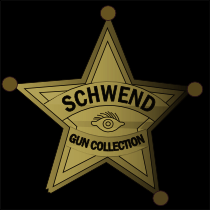
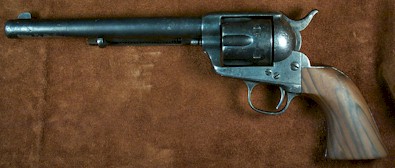 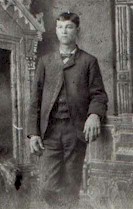
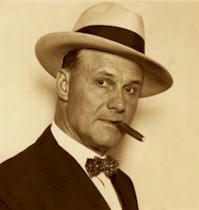 Tex Rickard late 1880's (left) and in the roaring 20's (right) |
Tex
Rickard's Colt .44/.40 Revolver Colt Single Action Army Revolver, .44-.40 Caliber, Manufactured 1882, 7.5" Barrel This old Colt was made in 1882 and shipped on September 14, 1882 to Hartley & Graham in New York City as part of a 50 gun order. It belonged to George ("Tex") Rickard who ultimately led boxing into the era of million-dollar gates, huge crowds, and fights at Madison Square Garden. Rickard gained notoriety as the manager/promoter of Jack Dempsey. Born in Kansas in 1870, Rickard left school at age eleven and, while still a youngster, worked cattle drives from Texas to Montana. At 24 (1894), he became a peace officer in Henrietta, Texas which would have placed him in direct contact with Harrison Schwend who was a night watchman at that time. Rickard won a plurality of votes in the election for city marshal in 1894, and he was said to have been a fair and popular official. That same year he and Leona Bittick, the daughter of a pioneer physician, were married. The deaths of Leona and their baby son the following spring (1895) were mourned by the entire community. Oddly enough, Harrison's bride of one year and young daughter also died a few years before in 1892. The two men had much in common. By the end of 1895, Rickard resigned his job as marshal and headed for Alaska. Family papers state that the gun "was given Rickard by Jim Curtis of Cambridge, Henrietta's old rival for county seat honors. Later it was owned by Lon Burson, deputy under Clay County's noted Sheriff, G. Cooper Wright". Burson then gave the gun to Harrison Schwend for his collection. |
|
Grat
Dalton/Henry Starr Winchester 1876 Winchester Model 1876, 45-75 Caliber Only recently it has come to light that this rifle had been mis-identified. It was displayed in the Wax Museum as belonging to Belle Starr. After review of the Winchester Factory letter on this gun as well as additional research in newspaper articles and family notes supported by the unique features of this rifle, it has come to light that it was originally owned by Grat Dalton, one of the notorious Dalton Gang and later by Henry Starr, the nephew of Sam Starr who was married to Belle Starr, "the Bandit Queen". It is surmised that over time, the museum felt that the Belle Starr connection might prove to be more exciting to the public, so they just switched the ownership. Careful examination would show that this rifle was shipped from the factory in March 1889, one month following Belle's murder. However, the family papers of Burton Schwend describe a rifle that is unique to the collection: "this gun can number a sheriff among its victims as can the rare Winchester rifle...which was owned by Grat Dalton and later by Henry Starr. It is a 45-75, four feet long, and in excellent condition". This model 76 is the only 45-75 that was ever in the collection and it measures exactly 4' long. It is also pictured in a number of newspaper articles about the collection published prior to the creation of the Wax Museum. It is surmised that Grat Dalton was the original owner and the rifle was used by him prior to the abortive raid on Coffeyville, Kansas on October 5, 1892 that saw the demise of Grat, brother Bob Dalton and co-horts Dick Broadwell and Bill Power at the hands of the armed citizens of Coffeyville. How it then came into the possession of Henry Starr can only be speculated. Starr evidently used it to kill US Deputy Marshal Floyd Wilson near Nowata, I.T. in early 1893. It is the only recorded murder that Henry Starr committed in his 32 year career as an outlaw. Eventually he was shot in the back during a bank robbery on February 18, 1921 and died 4 days later. The day before he died, he proclaimed to doctors that he "robbed more banks than any man in America". What a legacy!!! |
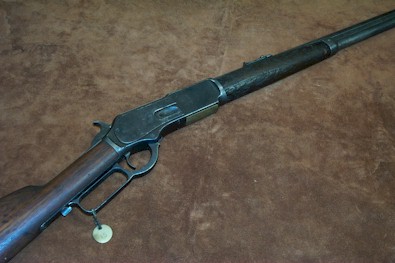 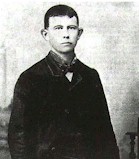
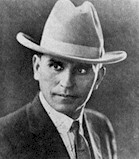 Grat Dalton Henry Starr |
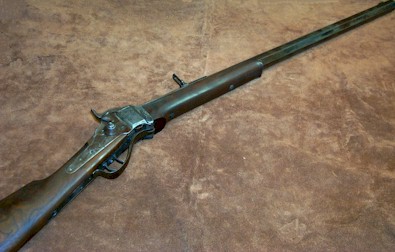
Sharps Buffalo Rifle |
Sharps Buffalo Rifle Sharps Model 1874, .44 Caliber "Old Reliable", 30" Octagonal Barrels, 13 lbs. 10 oz. Research shows that this Sharps Rifle was purchased by the fort sutler, Frank E. Conrad, at Fort Griffin Texas. The Sharps factory letter dates the transaction on September 5, 1877 and the shipment was made in care of Moorehead and Company in Fort Worth, Texas. The gun is pictured in a number of photographs with Roy Rogers who nearly purchased the entire Schwend collection in the late 1950's. The gun has been meticulously restored to its pre-fire condition. Family records state that there was a Sharps' rifle matching this one that was in the original collection owned by Billy Dixon and used in his famous shot that killed an Indian at a distance of almost a mile. This is not that gun as it was made more then 3 years after the incident. Nonetheless, it has an interesting history, even without the Dixon connection. 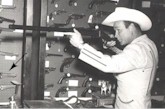
|
|
Henry
Model 1860 Rifle .44 Caliber Henry Rimfire, Manufactured in 1866, 1860 Patent The Henry Rifle was the precursor to the Winchester lever action series which basically settled the West along with the Colt Peacemaker. This is the early brass frame version which is one of the first models made by the fledgling New Haven Arms Company. Museum papers suggest that it saw use on the Goodnight Trail. This rifle was tagged #1 by the Museum and retains its original wood and all the fittings. |
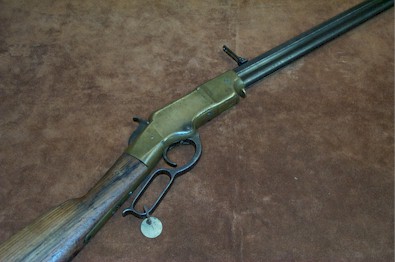 |
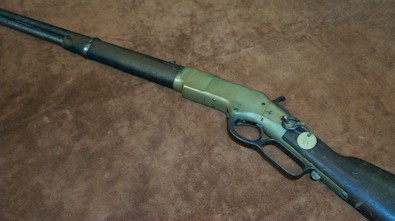 |
Winchester
First Model 1866 Winchester Lever Action Rifle, .44 Caliber RF The first year of production of this most popular rifle of the Old West. This rifle was known as the "Yellow Boy" throughout the frontier because of its distinctive brass frame. The Indians called it "Many Shots" and "Heap Firing" due to its design as a repeating rifle. It's moniker "The Gun That Won The West" was tied to this model. It retains all the original wood and fittings and survived the museum fire intact. |
|
Sharps-Borchardt Model Rifle Sharps-Borchardt Model 1878, Hunter's Rifle, .40 Caliber This gun was completely restored in 1996 using the metal parts that survived the wax museum fire of 1988. This particular model is the Hunter's Rifle Model with 24" barrel, lever action and set trigger feature. There were only 62 Hunter's models manufactured by Sharps between 1878 and 1881. This version weighs in at approximately 8 1/2 pounds. Sharps factory records do not reveal shipping date or location. How and when it came into the collection are still under investigation. |
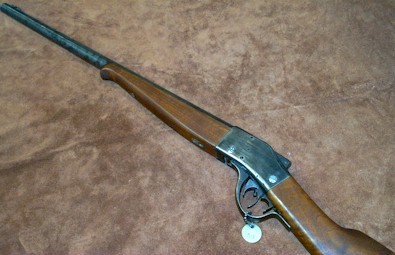 |
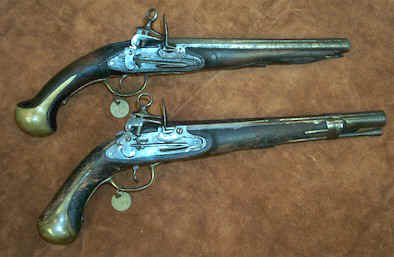 |
A Brace
of Flintlock Military Pistols Spanish Military Flintlock Pistols Circa 1760-1780, 18MM or App. 70 Caliber These guns survived the Museum fire of 1988 intact. They both feature sash hooks for attachment to a sash worn about the waist. This was the forerunner of the holster and belt used in later years. They have been tentatively identified as Spanish Cavalry pieces and feature the distinctive Miquelet lock with brass and iron furniture. This model was made for light regiments from 1760 to 1780, with a miquelet or spanish lock. The lock is the "catalan" model, made in Catalonia, Spain primarily for military models. The upper gun has its original stocks. The lower piece has been re-stocked, probably in Mexico. The pieces were most likely used in the battle for Mexican Independence or in the Mexican War and were carried by Mexican Soldiers. The identity of the original owners is still under investigation. |
|
German Maxim Model 08/15 Machine Gun World War I Captured War Trophy This 1918 vintage Maxim Machine gun was brought back to the states by a returning serviceman who captured it while on duty in Europe fighting the Germans in World War I. It is surmised that the gun was given to Harrison Schwend to add to his collection around 1920. This model machine gun was given the name the "Devils Paint Brush" as it has the dubious distinction for being singularly responsible for more casualties on the battlefield than any other weapon ever deployed, including the atomic bomb. It fired a 7.92MM round (same as the German infantry rifle) at an extreme range of 4400 yards at 400-500 rounds per minute. It was one of 14,000 units manufactured by Maschinen Fabrik Ausberg-Nurnberg Germany in 1918. |
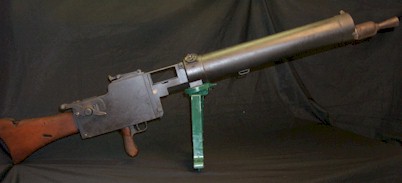 |
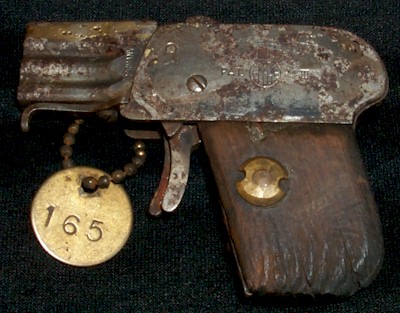 |
German
Gas Pistol EMGE Model III, Gas Pistol, Caliber .6 mm Rimfire This diminutive double barrel Over/Under pistol could prove to be a deadly adversary. It was capable of firing both bullets and tear gas shells. Its original cost at the time of its WWII introduction was listed in a catalog at $1.06. The pistol was manufactured by Gerstenberger & Eberwein of Gussenstadt, Germany, a firm noted for their inexpensive firearms. It is in original condition as pulled from the fire. The side shown in the photo was obviously face down in the display case as the reverse side grips look like charcoal. |
IF YOU HAVE ANY INFORMATION
ON THE WHEREABOUTS OF GUNS, PIECES OR PARTS FROM THE GRAND PRAIRIE WAX MUSEUM
FIRE OF 1988, PLEASE EMAIL: schwendguns@gmail.com.
MAYBE YOU'VE SEEN A TAGGED GUN AT A SHOW OR KNOW SOMEONE WHO HAS A SURVIVING
PIECE. I AM ACTIVELY SEEKING AND WILL PURCHASE COLLECTION PIECES.
THANK YOU!
HOME ABOUT GALLERY 1 GALLERY 2 GALLERY 4 BOOK CONTACT